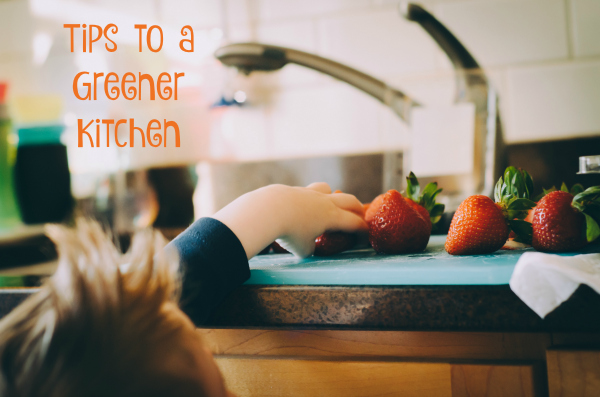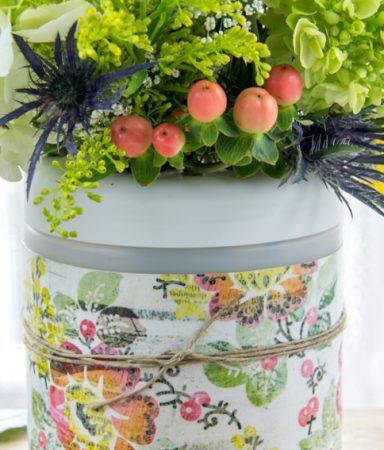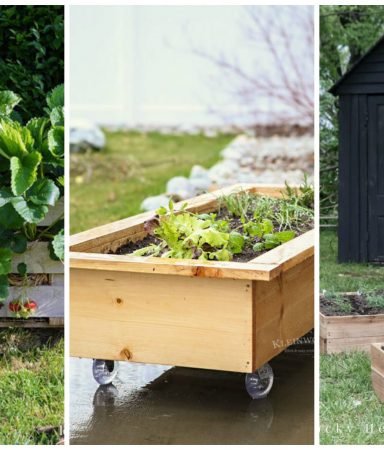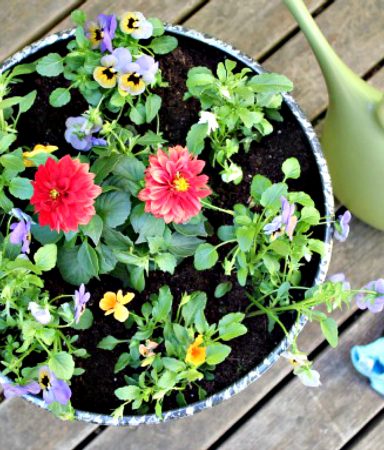The kitchen – seriously how much of a Mom’s time is spent here? For me, it’s where my three year old’s education primarily takes place. Eg. “We need six cups of flour, count with me: one, two, three…” Or there’s learning the colors with fruits and veggies: “What color is the banana? And the avocado? Yum!” For us, it’s also a great place for my children to pick up greener kitchen habits.
Simple Tips to a Greener Kitchen

Energy Star Appliances
In the New York Times Bestseller “The Green Book,” authors Elizabeth Rogers and Thomas M. Kostigen outline keys areas for everyday living that will bring the biggest impact to our planet. I love this book, but their bit on the kitchen is especially useful. Of course there’s information about composting (remember, we discussed that, huzzah!), running full loads for your dishwasher, eating left overs (mmmm, Thanksgiving), and taking advantage of Energy Star Appliances.
Using Cold Water
But did you ever think about the importance of using cold water for your garbage disposal? (That is, of course, when you’re not composting.) Or the importance of using the right-size pot on the stove? Rogers and Kostigen estimate “you could save about $36 annually for an electric range or $18 for a gas range.” Saving money, and saving the planet! Apparently, “five percent of the energy bought and used per person in the United States is for preparing and cooking food. Over a year, this exceeds twice the energy a person in Africa uses to power everything in his or her life.” Eeek…
Keep the Microwave Clean
And by keeping your microwave clean, you better maximize its energy. (Check out this great Make and Take for cleaning with citrus.) The less electricity you use, the less time cooking and less money spent. Typically microwaves are 3.5 to 4.8 times more energy efficient than traditional electric ovens. Not that I’m advocating strictly cooking in your microwave. You know I’m a lover of the slow-food movement.
Which is why I’ve also adopted the practice of pre-heating my oven (primarily) for baked goods, and letting things that roast or cook or reheat do so with the “pre-heat.” By reducing the amount of time my oven is on by one hour per year, “The Green Book” says I can “save an average of two kilowatt-hours of energy. If 30 percent of U.S. households could each reduce total oven pre-heating time nby just one hour per year, the sixty million kilowatt-hours of energy saved could bake a dozen cookies for every American.”
That reminds me, I’ve got some chocolate chips that are dying to find a home, in my greener kitchen!
photo via Kelly Sikkema








This link is for a lady who makes Green Produce Bags. The proceeds are going to their adoption fund. http://candlesinkites.com/erica/wordpress/2011/11/28/adoption-fundraiser/.
– Switching from paper towels to cloth napkins
– Using glass/plastic containers instead of Ziploc plastic bags (for blocks of cheese, leftovers, etc.)
– Buying in bulk at the grocery store and storing rice/beans/etc. in glass jars
I am still not sure how to reduced all the plastic from buying dairy products (besides becoming vegan . . . ) We love our yogurt, sour cream, parm cheese, etc. and it all comes in plastic.
Great post!
I am all about the cloth napkins (I thought about doing it as a monthly challenge; because it’s so easy and looks 100x’s better on our dinner table!)
And I’m a huge fan of your other suggestions too … we, like you are working on those as well.
As far as the plastic from the dairy products, I feel your pain. I even tried making our own yogurt; but my husband was not a fan (and truth be told, I prefer the other stuff too)… I try to use the plastic containers for storage for other things (kids toys, pencils, crayon bits, etc) …and I hold onto them to pass onto people that come over for parties and take home leftovers… yes, glass is preferred; but I figure better to get more than one use out of them before they go to recycled.
I think these are very useful steps to apply at home. If we consider that the majority of energy and material consumption takes place at home it will be a big contrubition.
Really great tips, sometimes its hard to remember with appliances you use every day.
I make homemade laundry detergent and dishwasher soap. Besides the money we have saved I feel good knowing exactly what’s in my detergents.
I’ve been wanting to do that as well. Care to share your recipe?
I switched to vinegar as my rinse agent (instead of Jet Dry and the like). It’s super-cheap, does an amazing job even with our hard water, and there’s no mystery chemical coating left on our dishes!
Nicole, that’s a great idea. I’ve used a green rinse product (can’t remember the name) but it’s über expensive. I am trying this TODAY! (PS.Any concerns you know of with “h.e.” appliances?